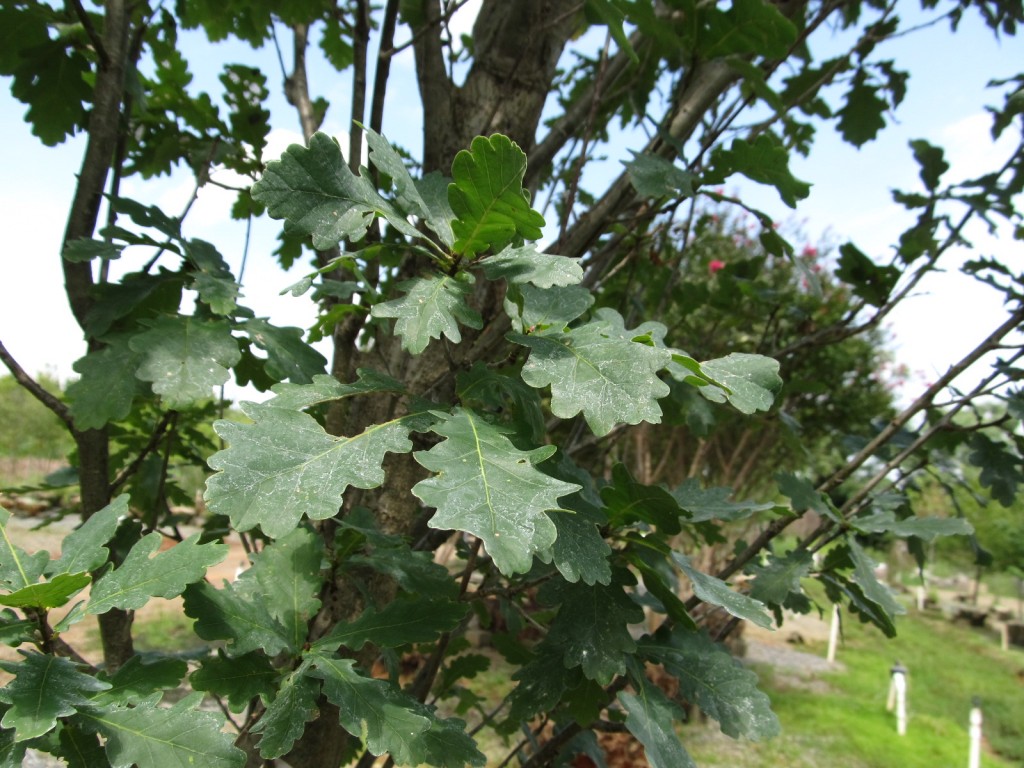Thinking about English oak (Quercus robur) brings to mind Robin Hood and Sherwood Forest. This majestic oak forms a broad spreading crown supported by a short sturdy trunk with a medium-brown, deeply-fissured bark (USDA hardiness zones 4-8). A young tree exhibits a pyramidal form. In a city park or golf course, it typically grows 50-70 feet tall and 40-50 feet spread. Wild specimens across Europe have been measured over 100 feet tall and hundreds of years old.
English oak has small 3-5 inch long deciduous leaves with 3-7 pairs of rounded lobes and very short petioles. Its deep green foliage color holds long into the fall before turning brown and persisting on the tree most of the winter. In early spring strings of hanging catkins flowers emerge shortly before the leaves.
English oak is a member of the “white oak group”. Its rounded leaf lobes appear similar to white oak (Q. alba), a U.S. native which has ear-like basal lobes and very short petioles. Small 1-inch oval acorns form in the fall. English oak may take up to 25-30 years to bear its first crop of acorns that are an important source of food for wildlife. Acorns (nuts) are edible after poisonous tannins are boiled or leached out. Keep acorns away from grazing animals (horses, cattle, etc.).
English oak wants full sun and a moist well-drained, acidic or alkaline (pH 5.8-7.5) soil. This oak does not tolerate extended droughts. A balled and burlap (b&b) tree should best planted from late winter through spring. Young trees tend to grow slowly – 12 to 15 inches annually. Few disease and pest problems trouble it. In some years aphids, several species of caterpillars, and leaf miners feed on the leaves, rarely damaging the tree. Powdery mildew can become serious in hot, humid climates such as in the Midwest and Southeastern U.S.
There are many selections of English oak, as well as hybrids with other oak species.’Skyrocket’ has erect branches and a narrow pyramidal form. ‘Pendula’ has a weeping habit. ‘Crimschmidt’ (Crimson Spire™), a hybrid between English oak and white oak, exhibits a fastigiate habit and leaves turn reddish in autumn.
English oak is native to Europe, western Asia and northern Africa. It is widely planted across Europe, Canada, and the northeastern U.S. as a landscape shade tree and as a tall privacy hedge. For centuries its hard wood has been utilized in the construction of sailing ships.


 Posted in
Posted in 
